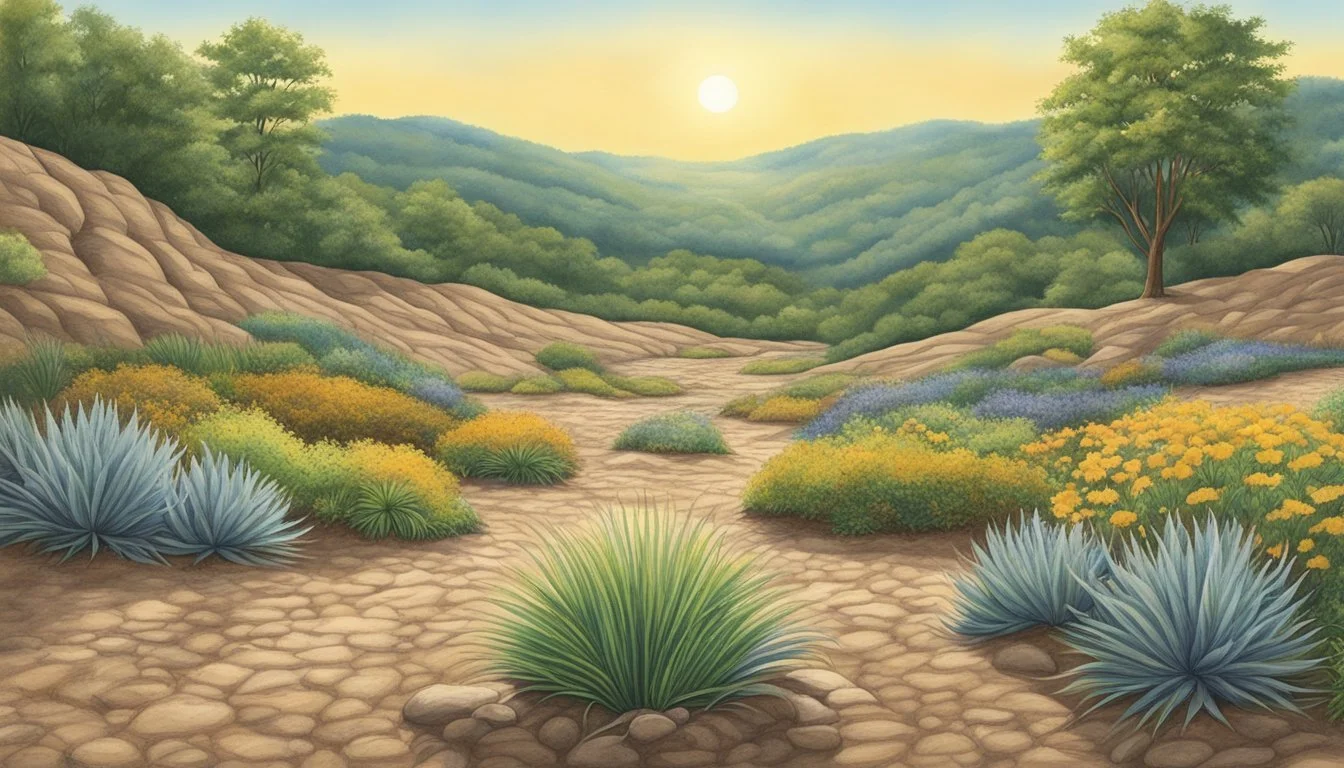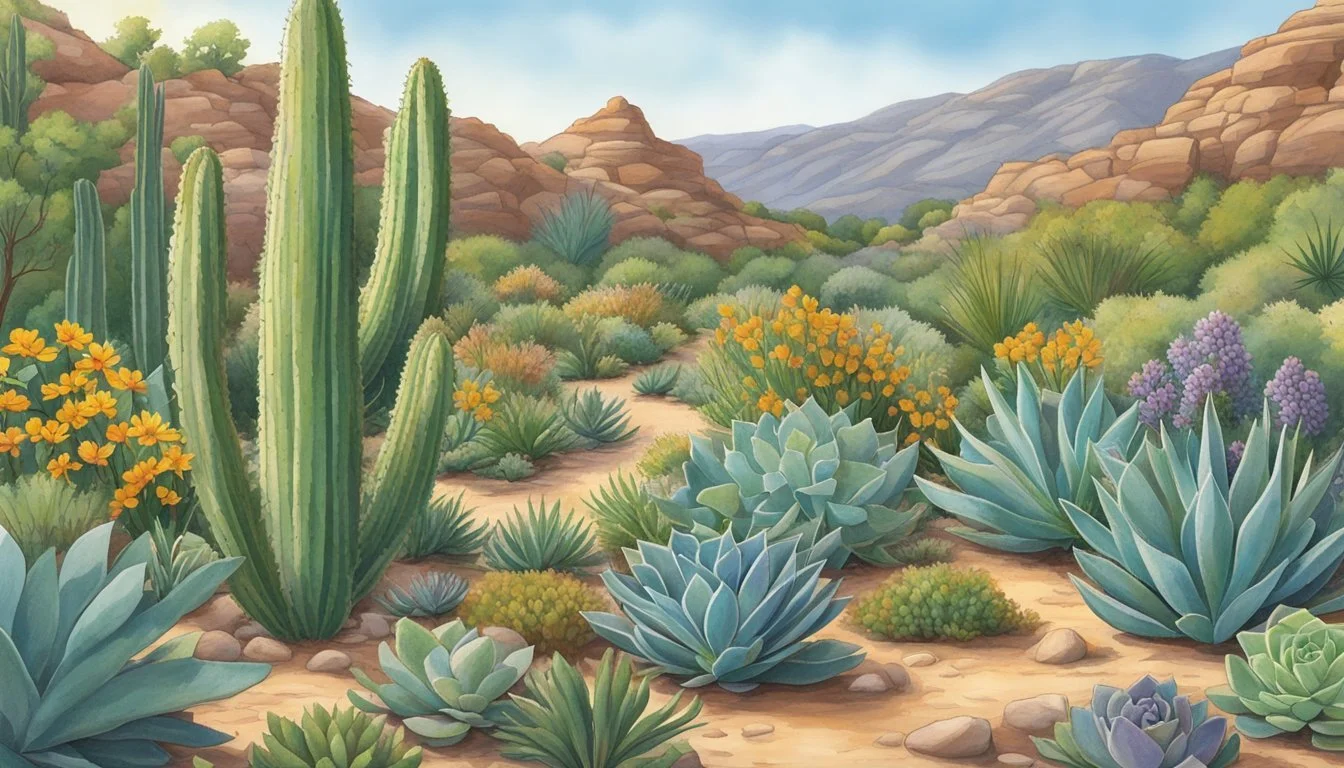Drought-Tolerant Plants in Tennessee
Best Varieties for a Resilient Garden
Drought-tolerant plants have become a fundamental component of sustainable landscaping in Tennessee. These resilient species, well-adapted to the local climate, offer a practical solution to the challenges of gardening in areas that experience water scarcity. Not only do they require less maintenance and resources, but they also help in preserving the natural biodiversity of the region. By integrating plants that are naturally equipped to withstand dry conditions, gardeners and landscapers can cultivate lush, vibrant gardens without placing excessive strain on water supplies.
Native plants of Tennessee, such as the Tennessee purple coneflower and the adaptable tulip poplar, are particularly adept at thriving in the state's varying environmental conditions. These species have evolved over time to handle sporadic rainfall and intense heat, making them ideal candidates for a drought-resistant garden. Additionally, by fostering a landscape populated with native flora, landowners contribute to the support of local wildlife, providing essential habitats and nourishment for a variety of insects and birds.
Adopting drought-tolerant plants is not only a reflection of gardeners’ practical needs but also of their commitment to environmental stewardship. Tennessee's natural beauty can be sustained and celebrated through the use of plants that mirror the strength and resilience of the local environment. As awareness of the importance of water conservation grows, the utilization of these hardy species exemplifies a shift towards more ecologically responsible gardening practices across the state.
Understanding Drought-Tolerant Plants
Drought-tolerant plants possess adaptations that allow them to thrive in conditions where water is scarce. This section explores what encompasses drought resistance and how integrating such plants can benefit landscaping in Tennessee.
Defining Drought Resistance
Drought-resistant plants, often referred to as drought-tolerant, are varieties that can withstand periods of limited water availability. These plants have developed specific physiological features, such as deep root systems and waxy leaf coatings, to minimize water loss and maximize uptake. In Tennessee, drought-tolerant species are ideal for sustainable landscaping due to their low maintenance requirements and resilience in the face of unpredictable rainfall.
Benefits in Landscaping
Employing drought-resistant plants in landscaping brings multiple advantages. These plants often require less maintenance than their water-dependent counterparts, reducing the need for irrigation and the associated costs. Additionally, they contribute to sustainable landscaping practices by conserving water resources and providing stable ecosystems for local wildlife. The utilization of drought-tolerant plants in Tennessee helps gardens remain vibrant, even during dry spells, and supports biodiversity.
Native Tennessee Plant Species
In Tennessee's varying climates and terrains, native plants play a vital role in conservation and garden aesthetics. Adapting to local conditions, they create sustainable habitats for wildlife and require less maintenance than non-native species.
Trees and Shrubs
American Beautyberry (Callicarpa americana) thrives in Tennessee's humid environment. This deciduous shrub displays vibrant purple berries that attract a plethora of bird species. The Eastern Redbud (Cercis canadensis) is a small, understory tree that provides stunning pink flowers in early spring. For larger spaces, the Tulip Poplar (Liriodendron tulipifera), Tennessee's state tree, serves as an excellent choice with its beautiful tulip-shaped flowers and height reaching up to 90 feet.
Flowering Plants and Grasses
Bright and hearty, Black-eyed Susan (Rudbeckia hirta) brings a cheerful yellow to gardens, while Coneflower (Echinacea spp.) adds a variety of colors and resilient blooms that persist through hot summers. Although not native, Lavender (Lavandula spp.) is a drought-resistant plant well-suited to Tennessee's drier regions, offering aroma and a splash of purple.
Creating a Drought-Tolerant Landscape
Creating a drought-tolerant landscape in Tennessee requires careful planning and design, specific soil preparation and planting techniques, and diligent long-term maintenance. It ensures the landscape's resilience against dry conditions while fostering a sustainable environment.
Planning and Design
The process begins with evaluating the local climate and selecting native plants known for their drought resistance, such as coneflowers, black-eyed Susans, and varieties of ornamental grasses. They should consider the land's topography to optimize water use and minimize irrigation needs. The design of a drought-tolerant landscape should incorporate features like rain gardens and permeable pathways to enhance water absorption.
Soil Preparation and Planting
Soil preparation is crucial; it should be enriched with organic matter to improve water retention and aeration. The correct planting techniques are just as essential, promoting strong root systems for better drought survival. One should be well-versed in proper planting techniques, such as spacing and depth, to ensure the establishment and growth of plants. They should choose soil amendments based on specific plant needs for optimal plant performance.
Long-Term Maintenance
Long-term maintenance includes smart watering practices, like using a soaker hose or drip irrigation system, to deliver water directly to the plant's root zone. Additionally, drought-resistant landscaping involves regular monitoring of plants for signs of stress and implementing mulching to conserve soil moisture. They should practice judicious pruning and weeding to reduce competition for resources, ensuring the vitality of the landscape.
Wildlife and Pollinator Support
Drought-tolerant plants in Tennessee serve a vital role in supporting local wildlife, especially birds and pollinators. These plants provide much-needed nectar, shelter, and breeding grounds.
Attracting Birds and Butterflies
Birds find refuge and nourishment in the deep-rooted perennials and native shrubs that withstand dry conditions. Plants such as the American beautyberry are not only resilient but their vibrant berries are a favorite among various bird species. Similarly, native butterflies including the monarch butterfly are drawn to a diverse array of flowering plants. For instance, the ashy sunflower, blooming from late summer to fall, offers a consistent source of nectar when other plants have ceased to bloom.
Supporting Native Pollinators
Tennessee's native pollinators -- bees, butterflies, and beneficial insects -- thrive on the indigenous flora that has adapted to local soils and climates. Cultivating native flowering plants like those included in the native wildflower and grass seed mix provides not only milkweeds, essential for monarch caterpillars, but also a variety of other wildflowers that serve as ideal nectar sources. Encouraging a diversity of these plants is key for maintaining healthy populations of beneficial insects and other pollinators crucial to the ecosystem's resilience.
Plant Selection
When planning a garden in Tennessee that can withstand periods of drought, it is imperative to choose plants proven to thrive under such conditions. The selection should focus on species that conserve water, reduce maintenance, and still enhance the aesthetic of your garden.
Annuals and Perennials
Annuals: For regions prone to aridity, annual plants that complete their lifecycle in a single growing season can be a strategic choice. These plants often have lower water demands and can offer vibrant color to your garden. An example is the drought-hardy petunia, which can add a splash of color without extensive watering needs.
Portulaca grandiflora (moss rose)
Zinnia elegans (zinnia)
Perennials: Perennials return each year, requiring less frequent replanting, thus reducing water consumption over time. The American Beautyberry is native to Tennessee and offers the dual advantages of minimal water needs and serving as wildlife attractants.
Echinacea purpurea (purple coneflower)
Rudbeckia hirta (black-eyed Susan)
Shrubs and Ornamental Grasses
Shrubs: Drought-tolerant shrubs serve as the cornerstone of a water-wise landscape. They provide structure and can often survive with natural rainfall once established. The American Beautyberry not only thrives with minimal water but also attracts birds with its vibrant berries.
Ceanothus americanus (New Jersey tea)
Ilex vomitoria (yaupon holly)
Ornamental Grasses: Incorporating ornamental grasses into a garden can create visually striking textures and movement, while also being highly drought-resistant. Grasses such as Panicum virgatum (switchgrass) and Sporobolus heterolepis (prairie dropseed) exhibit resilience in dry conditions and require less upkeep than traditional lawn grasses.
Panicum virgatum (switchgrass)
Sporobolus heterolepis (prairie dropseed)
Selecting appropriate plant species that are either annuals, perennials, shrubs, or ornamental grasses will create a drought-resistant landscape that sustains beauty and eco-friendliness in Tennessee's unique climate.
Regional Considerations
In Tennessee, selecting drought-tolerant plants requires understanding the unique climatic challenges and leveraging native species that thrive in distinct regional conditions. Gardeners and landscapers must consider local weather patterns, soil types, and the native flora of their particular area to ensure successful, sustainable plantings.
Challenges in Eastern Tennessee
Eastern Tennessee faces distinct environmental hurdles, with the region's topography influencing weather patterns that impact garden and landscape choices. This area, with its proximity to the Eastern United States mountain ranges, experiences more rainfall but also deals with rocky soils, which can challenge the establishment of deep-rooted plants. Gardeners in Eastern Tennessee often opt for hardy native species that are accustomed to the local conditions, including fluctuations in moisture and cooler temperatures relative to the rest of the state.
Species for Middle Tennessee and Beyond
In contrast, Middle Tennessee extends into a region with hotter, drier summers and requires plants with a robust tolerance for heat and periodic drought. Native plants like the Purple Coneflower and Blazing Star are excellent choices for sunny, well-drained sites in this area. These species support local wildlife and are adapted to the regional climate, including its capacity to withstand conditions similar to those in neighboring Kentucky. Through strategic selection of drought-tolerant plants, Middle Tennessee's landscapes can flourish while conserving water resources.
Ecosystem and Environmental Impact
Drought-tolerant plants significantly influence the ecosystem and environment in Tennessee by promoting soil health and supporting local biodiversity. These resilient species contribute to sustainable gardening practices and provide colorful blooms that benefit both people and wildlife.
Erosion Control and Soil Health
Erosion control is a crucial environmental service provided by drought-tolerant plants. With their deep and extensive root systems, these plants bind the soil more effectively than non-native species, reducing soil loss and degradation. The stabilization of soil by drought-tolerant plants helps maintain nutrient levels and prevents runoff, encouraging a more sustainable use of land.
Deep-rooted grasses: Reduce topsoil loss and maintain soil structure.
Drought-resistant shrubs: Create barriers against wind and water erosion.
Enhancing Local Biodiversity
Drought-tolerant plants are integral in nurturing local biodiversity. They often exhibit colorful blooms that attract a variety of local wildlife, including bees, butterflies, and birds, which are essential for pollination and maintaining ecological balance.
Native wildflowers: Supply nectar and pollen for insects.
Shrubs and trees: Offer habitats and food for birds and small mammals.
By utilizing these native, drought-resistant species, gardeners and landscapers can construct a vibrant ecosystem that is both aesthetically pleasing and ecologically functional.
Frequently Asked Questions
When considering plant selection for gardens in Tennessee, it is important to consider drought tolerance due to varying rainfall. Below are some common questions regarding resilient plants suitable for the state's climate.
What are the best low-maintenance perennials for dry conditions in Tennessee?
Tennessee gardens benefit from low-maintenance perennials such as Lavender, Daylily, Purple Coneflower, Yarrow, and Coreopsis. These plants are well adapted to thrive with minimal watering.
Which evergreen plants can withstand drought in Tennessee?
Certain evergreens display remarkable drought resistance and include varieties like Juniper and Holly, which maintain their foliage year-round without requiring excessive irrigation.
What are the top drought-resistant landscape plants recommended for Tennessee gardens?
For drought-resistant landscaping in Tennessee, consider Tropicals/Annuals such as Cacti, Mandevilla, and Bougainvillea along with sturdy perennials like Coneflower.
Can you recommend plant varieties that tolerate full sun and require minimal watering in Tennessee?
Plants that are well-suited for full sun in Tennessee and require little watering include ornamental grasses, which come in a variety of sizes and require little maintenance once established.
What trees are known for their drought tolerance in Tennessee's climate?
Olive trees and Pomegranates are examples of trees that can withstand dry conditions in Tennessee, both offering not only drought tolerance but also edible yields.
Are there any heat-tolerant outdoor plants that thrive with little to no watering in Tennessee?
Yes, plants like the Yarrow, which is not only heat-tolerant but also drought-resistant, making it an excellent choice for Tennessee gardens experiencing hot summers with limited rainfall.






